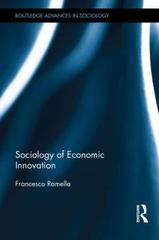Question
Beyond grief lay Coolidge's accurate perception that in the 1920s [Secretary of the Treasury] Mellon's and his own policies were yielding the good that the
"Beyond grief lay Coolidge's accurate perception that in the 1920s [Secretary of the Treasury] Mellon's and his own policies were yielding the good that the men had predicted. Today we estimate that the highest level of unemployment under President Coolidge had been 5 percent in the year he was elected. From there it dropped to 3.2 percent in 1925 and then into the twos and ones. Citizens could afford all the new products. There was nothing bubbly about the potential for productivity gains. By the end of 1925, Ford's peak production was 8,500 a day, up substantially from the 6,000 from a few years before. Overall in the years from 1923 to 1929 car production would double."
Amity Shlaes, economic journalist, and author, fromThe Forgotten Man
"What we should keep in mind is that at least half the population was not benefiting at all from this new prosperity. Indeed, some large sections of the population, particularly farmers, were doing much worse than they had been doing in the decade before. So it was a very uneven prosperity. ... You can see seeds of the Depression in the 1920s in a number of ways. You can see it in the highly uneven distribution of the prosperity of that time. You can see it in the agricultural depression that began in the mid-1920s and hit farmers well before the Depression hit everybody else. And you can see it in the weakening of a number of key industries in the last part of the decadethe automobile and construction industries in particular. This was perhaps the most obvious indicator of the Depression that was soon to come."
Alan Brinkley, historian, from an interview
A. Briefly describe ONE major difference between Shlaes's and Brinkley's historical interpretations.
B. Briefly explain how ONE example from the period 1900 to 1940 not explicitly mentioned in the excerpts could be used to support Shlaes's argument.
C. Briefly explain how ONE example from the period 1900 to 1940 not explicitly mentioned in the excerpts could be used to support Brinkley's argument.
Step by Step Solution
There are 3 Steps involved in it
Step: 1

Get Instant Access to Expert-Tailored Solutions
See step-by-step solutions with expert insights and AI powered tools for academic success
Step: 2

Step: 3

Ace Your Homework with AI
Get the answers you need in no time with our AI-driven, step-by-step assistance
Get Started


